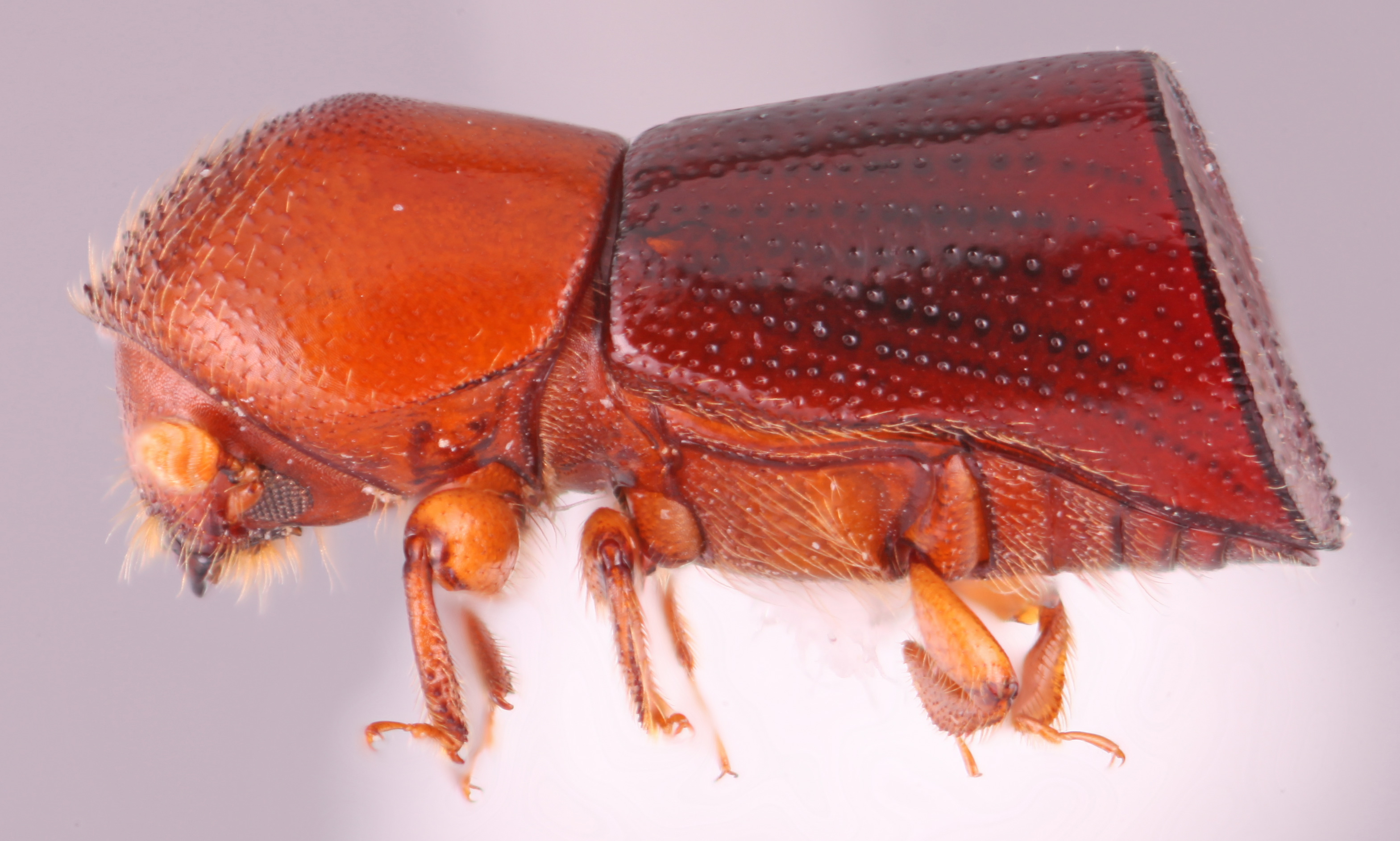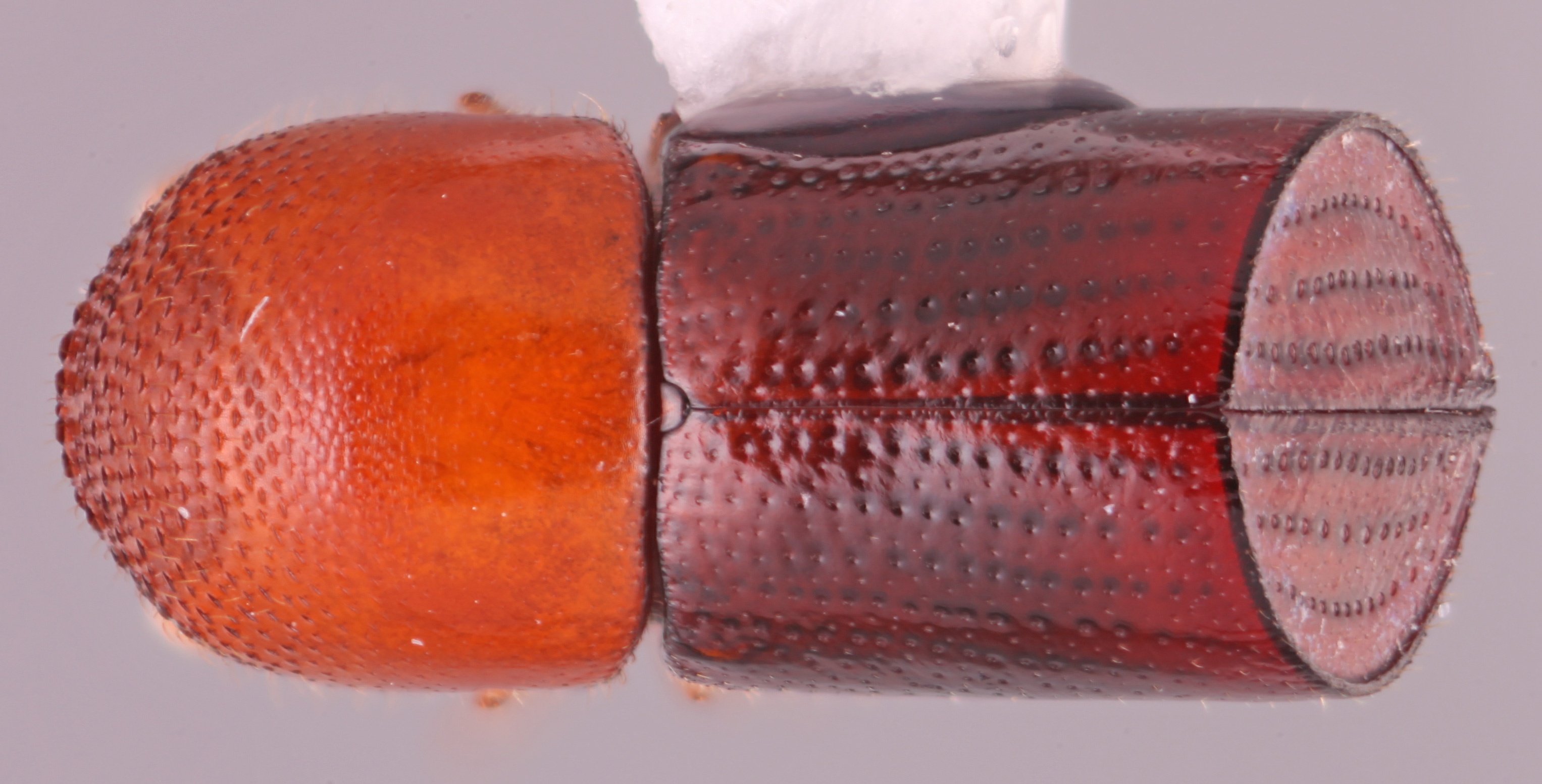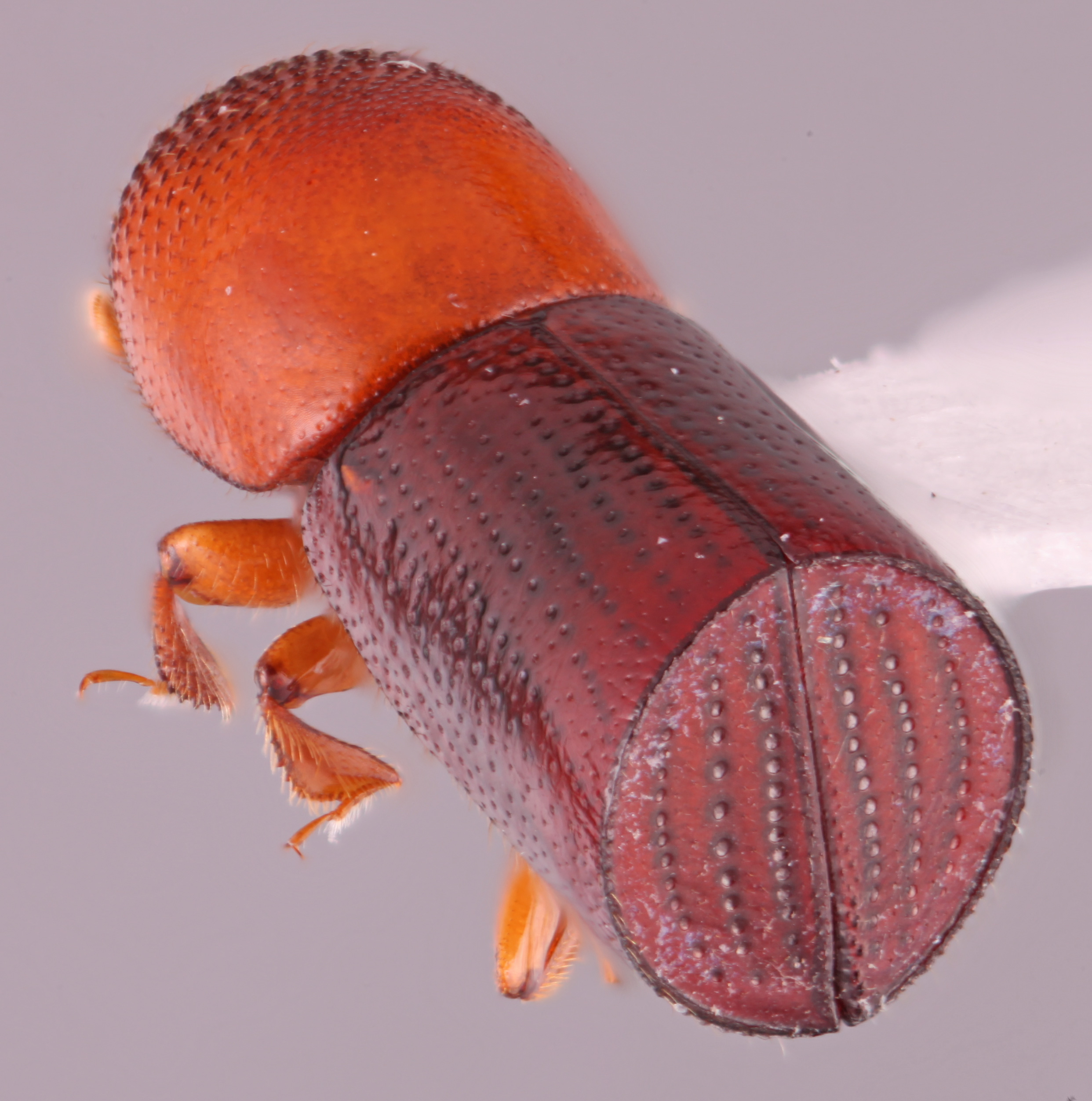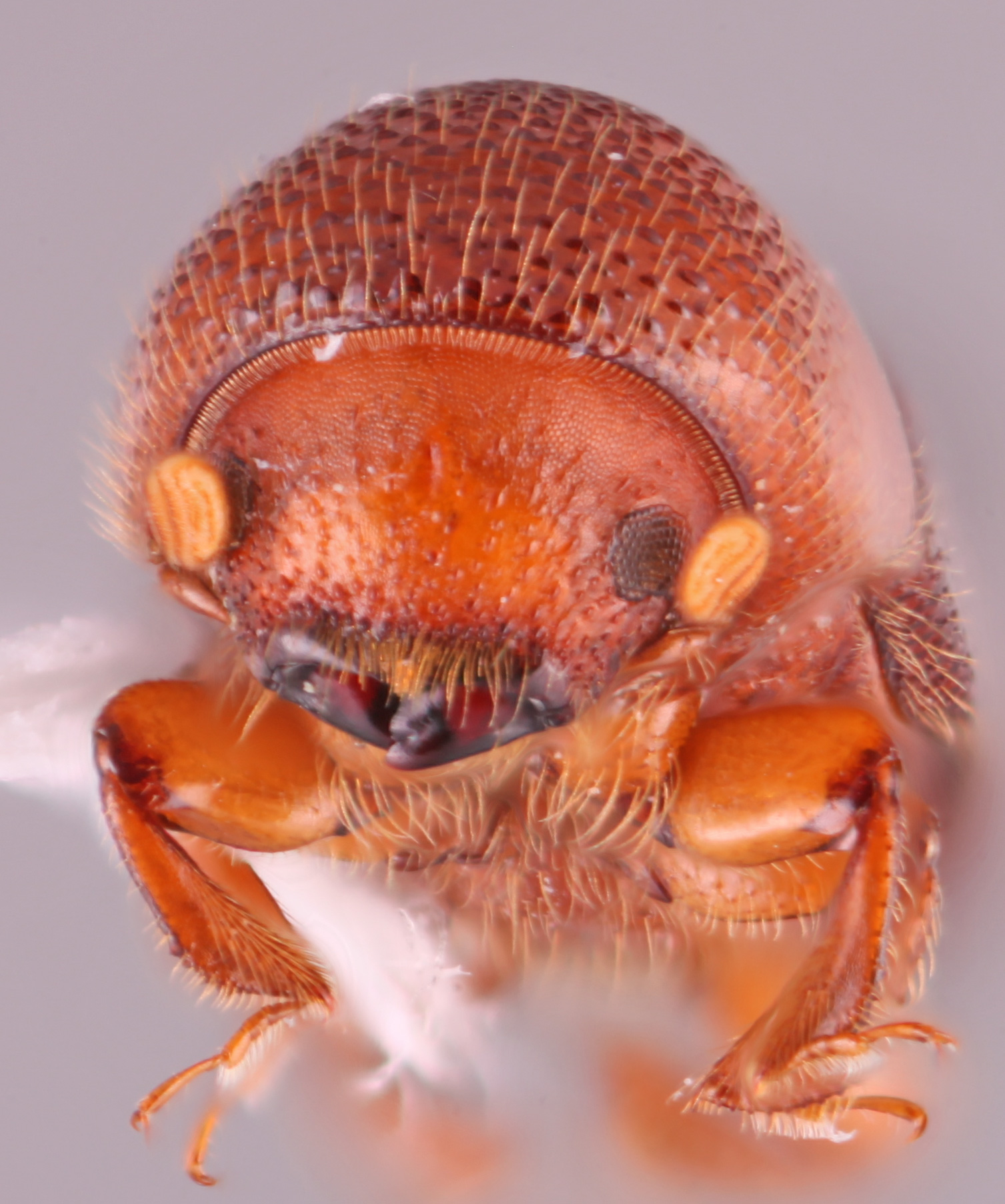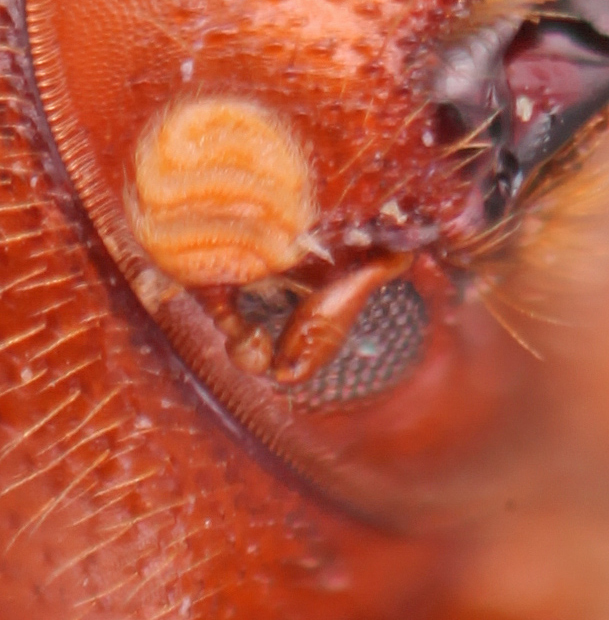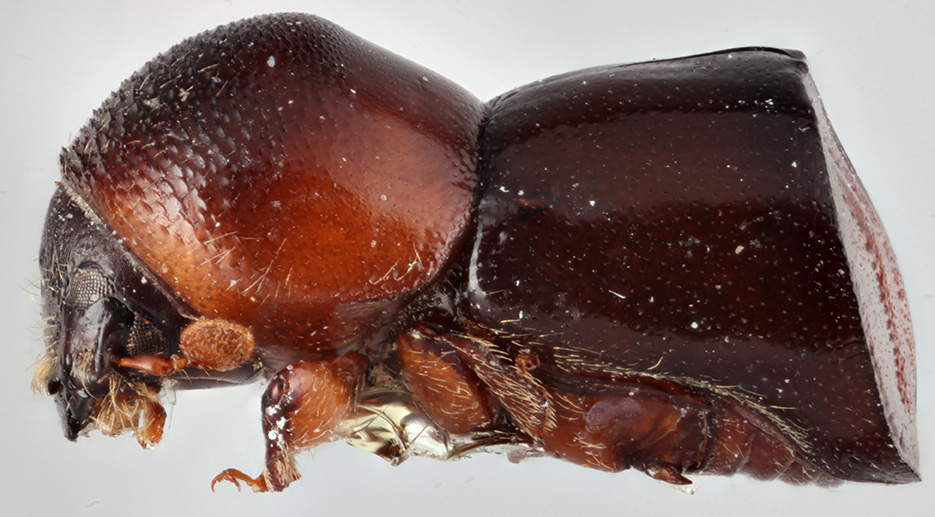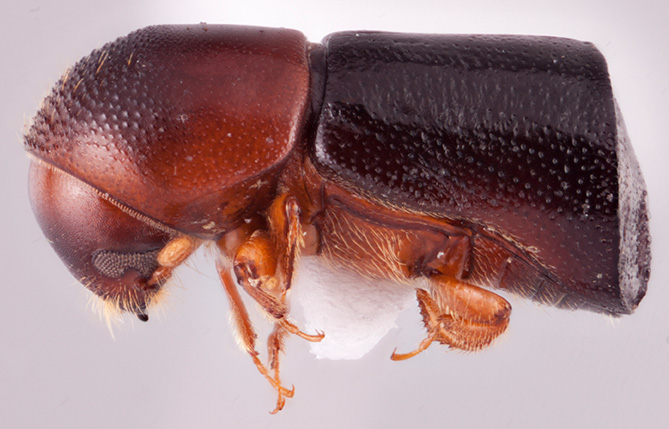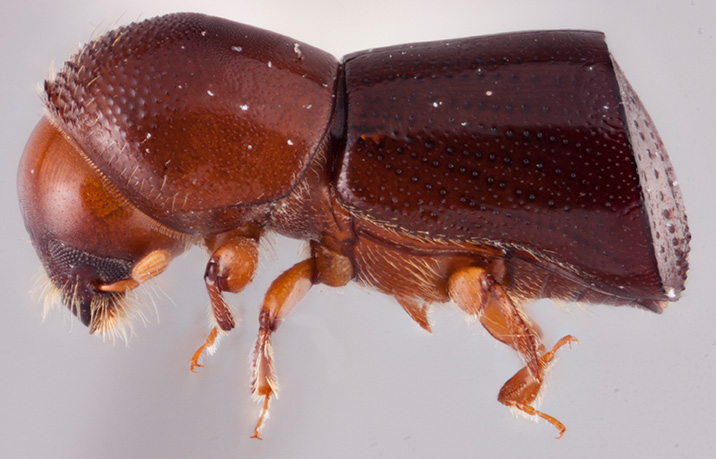Amasa
|
Amasa schlichii; S.M. Smith |
|
Amasa schlichii; S.M. Smith |
|
Amasa schlichii; S.M. Smith |
|
Amasa schlichii; S.M. Smith |
|
typical Amasa type 4 club; S.M. Smith |
|
Amasa beesoni; R.K. Osborn |
|
Amasa lini; R.K. Osborn |
|
Amasa gibbosa; R.K. Osborn |
Taxonomy
Amasa Lea, 1894: 322.
Synonyms
Pseudoxyleborus Eggers, 1930: 206. Wood, 1984: 223.
Anaxyleborus Wood, 1980: 90. Wood, 1983: 647.
Diagnosis
2.5−5.0 mm long, 2.11−3.4 times as long as wide. Amasa is distinguished by the elytralelytral:
pertaining to the elytra
declivitydeclivity:
downward slope of either the pronotum or elytra
 truncate, margined with a circumdeclivital ringcircumdeclivital ring:
truncate, margined with a circumdeclivital ringcircumdeclivital ring:
a costa that completely encircles the elytral declivity
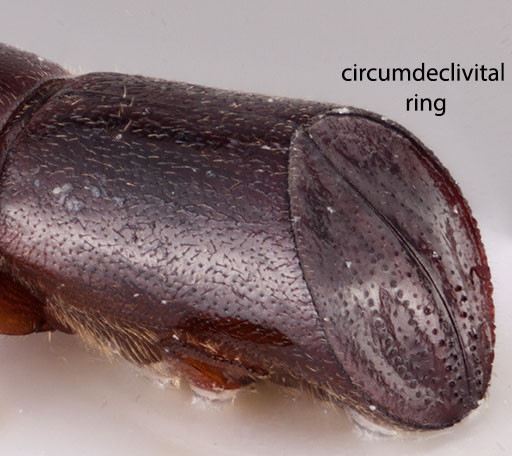 ; antennalantennal:
; antennalantennal:
pertaining to the antennae
club flat, types 4 or 5 (typically type 4), clubclub:
the broadened, flattened end of antenna, in Xyleborini comprised of three segments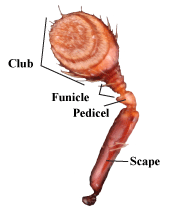 sutures sinuate, two sutures visible on posteriorposterior:
sutures sinuate, two sutures visible on posteriorposterior:
toward the rear end; opposite of anterior
 face; protibiaprotibia:
face; protibiaprotibia:
tibia of the first pair of legs
typically slender, inflatedinflated:
blown up; distended
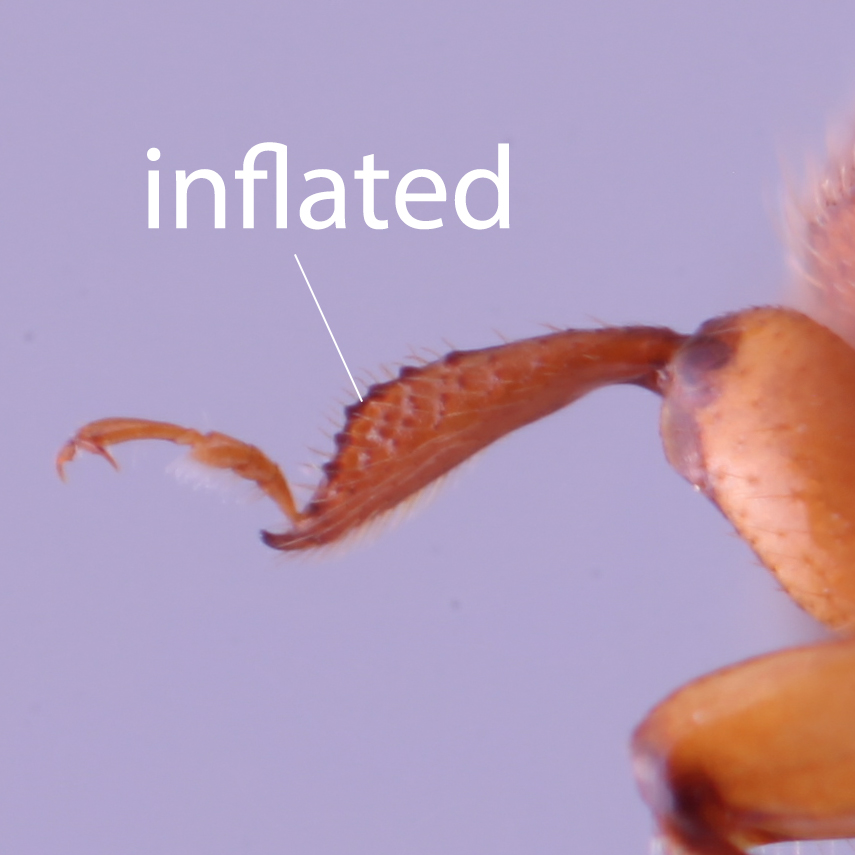 and granulategranulate:
and granulategranulate:
pertaining to a coarse, grainy surface texture
 on posteriorposterior:
on posteriorposterior:
toward the rear end; opposite of anterior
 face (rarely distinctly triangular or unarmed on posteriorposterior:
face (rarely distinctly triangular or unarmed on posteriorposterior:
toward the rear end; opposite of anterior
 face), anterioranterior:
face), anterioranterior:
the front or forward; opposite of posterior margin of the pronotumpronotum:
margin of the pronotumpronotum:
the dorsal surface of the thorax
with a row of serrations; scutellumscutellum:
a shield-like sclerotized plate located at the midpoint of the elytral base
flat, flush with elytralelytral:
pertaining to the elytra
surface; declivitaldeclivital:
pertaining to the elytral declivity
face with three striae; procoxae contiguous or narrowly separated; and mycangial tufts absent.
Amasa is easily confusedconfused:
of markings, having indefinite outlines or running together as lines or spots without definite pattern; usually referring to punctures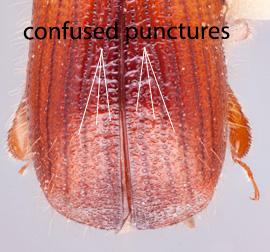 with other species possessing truncatetruncate:
with other species possessing truncatetruncate:
appearing cut off or suddenly shortened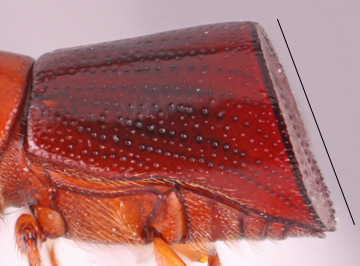 declivities in other genera listed below and can be most readily distinguished by the declivitaldeclivital:
declivities in other genera listed below and can be most readily distinguished by the declivitaldeclivital:
pertaining to the elytral declivity
face with only 3 striaestria:
punctures in rows, which may or may not be impressed to make grooves .
.
May be confused with
Xylosandrus, Cyclorhipidion, Pseudowebbia, Truncaudum, and Webbia
Distribution
Distributed throughout Asia and Australasia, also occurring in Africa. One species has been introduced to South America (Brazil, Chile, and Uruguay) and Europe (France and Spain (Flechtmann and Cognato 2011Flechtmann and Cognato 2011:
Flechtmann CAH, Cognato AI. 2011. First report of Amasa truncata (Coleoptera: Curculionidae: Scolytinae) in Brazil. The Coleopterists Bulletin 65: 417-421. https://doi.org/10.1649/072.065.0419, Gómez et al. 2017, Kirkendall 2018Kirkendall 2018:
Kirkendall LR. 2018. Invasive bark beetles (Coleoptera, Curculionidae, Scolytinae) in Chile and Argentina, including two species new for South America, and the correct identity of the Orthotomicus species in Chile and Argentina. Diversity 10: 40. https://doi:10.3390/d10020040, Barnouin et al. 2020Barnouin et al. 2020:
Barnouin T, Soldati F, Roques A, Faccoli M, Kirkendall LR, Mouttet R, Daubree J-B, Noblecourt T (2020) Bark beetles and pinhole borers recently or newly introduced to France (Coleoptera: Curculionidae, Scolytinae and Platypodinae). Zootaxa: 4877: 51-74. https://doi.org/10.11646/zootaxa.4877.1.2).
Gallery system
This usually comprises a short radial tunnel leading to a single, large, flat brood chamber, extending in the longitudinal plane.
Remarks
Previous morphological studies of Amasa have suggested that species are very morphologically variable (Hulcr and Cognato 2013Hulcr and Cognato 2013:
Hulcr J, Cognato AI. 2013. Xyleborini of New Guinea: a taxonomic monograph. Thomas Say Publications in Entomology, Entomological Society of America, Lanham, Maryland, 176 pp.). As a result many species were considered conspecific and part of a morphological continuum. Molecular data generated as part of this study has demonstrated that Amasa species are actually morphologically conserved even across broad ranges (Smith et al. 2020aSmith et al. 2020a:
Smith SM, Beaver RA, and Cognato AI. 2020a. Taxonomic changes for Indo-Malayan ambrosia beetles (Coleoptera: Curculionidae: Scolytinae: Xyleborini). The Coleopterists Bulletin 74: 37-40. https://doi.org/10.1649/0010-065X-74.1.37). Amasa species outside of our coverage area are thus in need of revision, and potentially much of the diversity is awaiting discovery.

